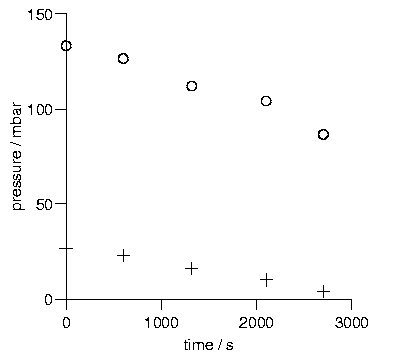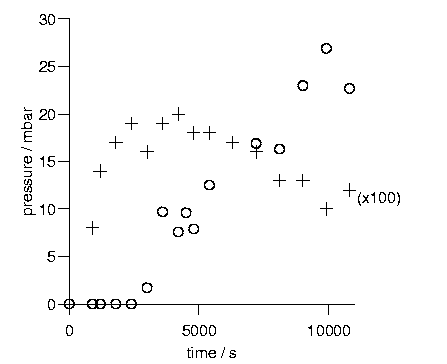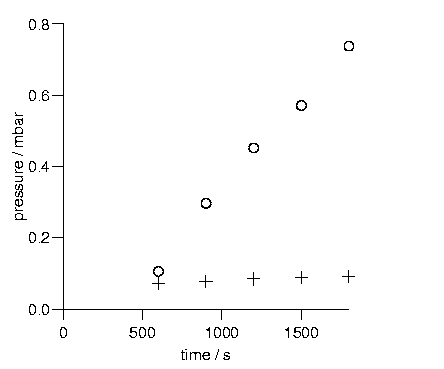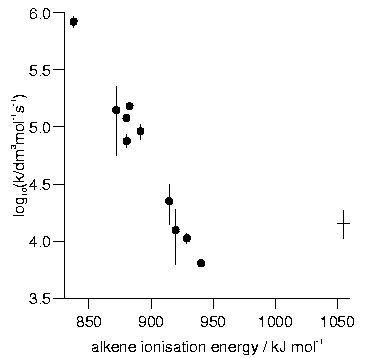

Figure 1. Consumption of acetaldehyde (circles) and acrolein (+) during their co-oxidation: initial concentrations, [CH3CHO]/[O2]/[He]/[C2H3CHO] = 5/5/4/1; total initial pressure, 400 mbar; 393 K.

Figure 2. Consumption of acetaldehyde (circles) and propanal (+) during their co-oxidation: initial concentrations, [CH3CHO]/[O2]/[He]/[C2H5CHO] = 5/5/4/1; total initial pressure, 400 mbar; 393 K.

Figure 3. Production of peracetic acid (circles) and glycidaldehyde (×100) (+) during the co-oxidation of acetaldehyde and acrolein: initial concentrations, [CH3CHO]/[O2]/[He]/[C2H3CHO] = 5/5/4/1; total initial pressure, 400 mbar; 393 K.

Figure 4. Production of glycidaldehyde (+) and 1-butene oxide (circles) during the co-oxidation of acetaldehyde, 1-butene and acrolein: initial concentrations, [CH3CHO]/[O2]/[He]/[C2H3CHO]/[1-C4H8] = 10/10/8/1/1; total initial pressure, 400 mbar; 383 K.

Figure 5. Production of glycidaldehyde (+) and 1-butene oxide (circles) during the co-oxidation of acetaldehyde, 1-butene and acrolein: initial concentrations, [CH3CHO]/[O2]/[He]/[C2H3CHO]/[1-C4H8] = 10/10/8/1/1; total initial pressure, 400 mbar; 403 K.

Figure 6. The correlation between the rate constant for epoxidation of alkenes by acetylperoxyl radicals (k) at 393 K [10,15,16] and the ionisation energy [21] of the C=C double bond of alkenes (cirlces), showing the anomalous behaviour of acrolein (+) (at 383K). The error limits represent the standard errors in the ratio of the epoxidation rate constant to that of the reference reaction with respect to which they were all measured, the abstraction of the acyl hydrogen atom from acetaldehyde by acetylperoxyl radicals.